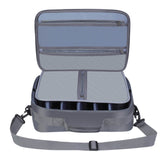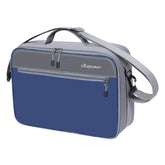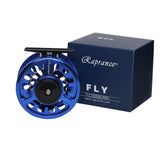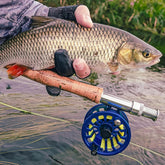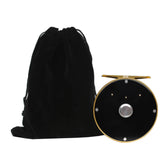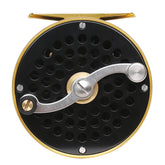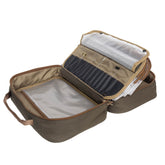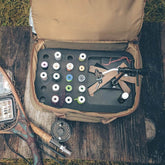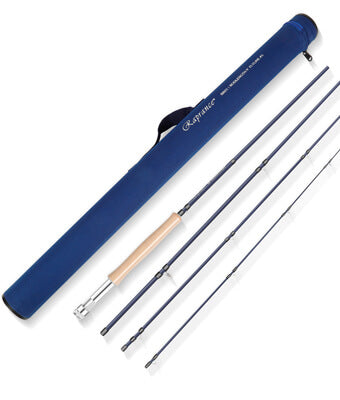Fly Line: A Comprehensive Guide to Choosing the Best Floating Options for Beginners and Experts
Choosing the right floating fly line is essential for successful fly fishing. A floating fly line helps keep your fly on the surface, enhancing your chances of attracting fish. Whether you are new to the sport or looking to upgrade your gear, understanding various options can significantly improve your experience on the water.

I have spent countless hours testing different lines, and I have found that the best floating fly lines combine performance and durability. For beginners, choosing the right line can be overwhelming due to the vast selection available. My goal is to simplify this process by sharing top-rated options that deliver excellent results and fit various budgets.
In this article, I will guide you through the key factors to consider when selecting a floating fly line. You'll also discover some of the top-rated lines that I trust for my fishing adventures. By the end, you’ll have the knowledge needed to make informed decisions and enhance your fly fishing journey.
Choosing the Right Fly Line
Selecting the right fly line is essential for effective casting and successful fishing. The choice depends on various factors, including the fishing environment, casting style, and specific equipment used.
Factors Influencing Fly Line Selection
When choosing a fly line, I consider several key factors. First is line weight, which should match the weight of my rod. A mismatch can hinder casting performance. For example, a 5-weight rod pairs well with a 5-weight line, ensuring efficient energy transfer.
Next, I assess casting style. For precision, I often opt for weight forward (WF) lines, which concentrate weight at the front, promoting longer casts. Conversely, if I need a gentle presentation, I prefer double taper (DT) lines, enabling delicate casts and roll casts.
Lastly, understanding the specific fishing situations is crucial. For floating techniques on calm waters, I may choose a specific taper profile to aid in accurate placement while avoiding spooking fish.
Understanding Line Weights and Tapers
Line weights are categorized from 1 to 14, with lower numbers suitable for small streams and higher numbers for larger bodies of water. Understanding this system helps me select the appropriate line for the targeted fish species and their environment.
Taper profiles greatly influence performance. Weight forward lines excel in quick loading and long-distance casting, while double taper lines offer versatility and smooth turnover. I often choose the profile based on my preferred casting style and the conditions at hand.
Lastly, the density of the line plays a role in its performance underwater. Floating lines keep my fly on the surface, while sinking tips or full sinking lines can be selected for different depths, allowing me to adapt to varying fishing conditions.
Recommended Floating Fly Lines
Choosing the right floating fly line is essential for success on the water. I have narrowed down the top choices for beginners and premium options for those with more experience.
Top Choices for Beginners
For those just starting, I recommend lines that balance ease of use and performance. Rio Mainstream is a favorite due to its affordability and versatility. It offers a great weight-to-length ratio, making casts more manageable.
Another solid choice is Scientific Anglers’ AirCel. This line has excellent floating properties and is highly durable. Its visibility aids beginners in tracking their casts. The Orvis Clearwater also stands out for its smoother surface, which enhances line retrieval.
Selecting lines that are forgiving and user-friendly helps build confidence. My experience shows that investing in a reliable line early on can set the foundation for more enjoyable fishing outings.
Premium Options for Experienced Anglers
For seasoned anglers, I recommend both Rio Gold and Airflo Super-Dri blends. The Rio Gold excels in versatility, making it suitable for various conditions. Its line taper design allows for precise presentations, which can be crucial in tricky fishing situations.
The Airflo Super-Dri boasts exceptional durability and a proprietary coating that keeps it floating higher. This can make a significant difference in still waters. Additionally, Scientific Anglers’ Frequency series offers advanced tapers for refined casting and line control.
Using premium lines enhances the fishing experience. I have found that these options not only improve casting distance but also contribute to better fish hookups. Investing in higher-quality lines often leads to greater satisfaction on the water.
Techniques and Applications
Understanding casting dynamics and how to control your line can significantly enhance your fly fishing success. The techniques I employ vary with fishing conditions, making it crucial to adapt methods for effective presentation.
Casting Dynamics and Line Control
When I cast with a floating fly line, I focus on rod angle and line speed. A short, quick cast allows for accurate placements, especially when targeting fish in specific areas. I often incorporate mending to position the line effectively on the water surface.
This method helps maintain a natural drift, which is essential for nymphing and dry fly presentations. For delicate presentations, I prefer a lighter line weight. This aids in achieving a subtle landing that won't spook fish. I practice multiple casting styles to improve my line control, particularly when using streamers.
Optimal Use in Various Fishing Conditions
Fishing conditions dictate my choice of technique. In faster water, I utilize heavy nymphs and weight to ensure they reach the desired depth quickly. Casting upstream allows for better drift management, as I can monitor the line’s behavior closely.
In calmer waters, I opt for dry flies, emphasizing a gentle approach. Accurate casts are vital here, ensuring that the fly lands softly and remains undisturbed. The proper use of line control can mean the difference between spooking fish and enticing them.
Understanding these techniques greatly enhances my overall effectiveness as an angler.

